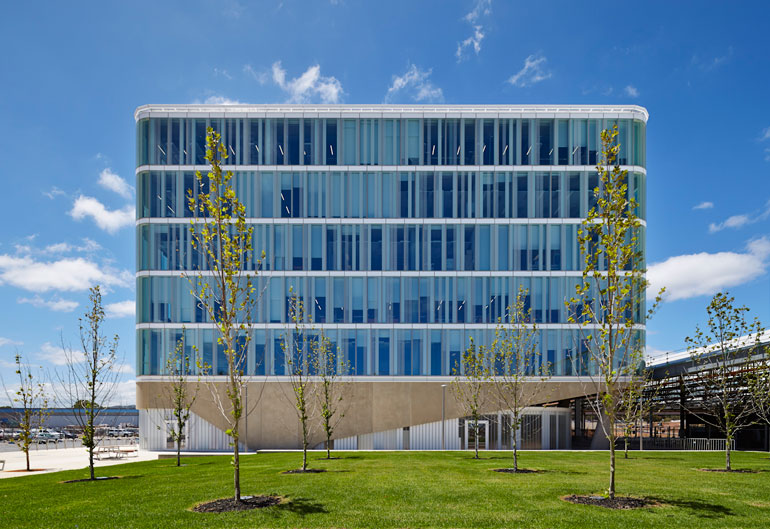Building information modelling (BIM) is an established tool in design and construction. However, the potential savings it can bring across the full lifecycle, particularly in facilities management, are substantial.
There’s been a lot of talk about BIM in facilities management. Some organisations claim that they do it, some software companies claim to offer it, but what does it really take to say BIM in facilities management is here? If you ask Steve Woodrow, projects director at Flinders University, he’ll tell you the answer is simple.
It’s about taking a 3D model, a digital twin of a facility, and making it useful to the team that has to operate it, ensuring it’s as useful as their spanners or screwdrivers.
During construction of its $120 million Flinders at Tonsley building, the university took the opportunity to successfully implement 3D BIM across the full asset lifecycle, from design through to construction and then, most importantly, into everyday facilities management.
What does this mean in practice?
The use of BIM in design and construction is now commonplace. There’s plenty of software out there to design buildings and their systems using BIM – ultra-accurate 3D models loaded with information that can be used to construct buildings more efficiently.
A complete building model.There’s also software to bring different 3D models together, to make sure they ‘fit’ and to provide a platform for design teams in different organisations to collaborate. Ensuring Flinders at Tonsley was designed and constructed using BIM was a relatively simple, contractual issue.
However, they realised that to transition into facilities management, they needed a different type of BIM solution. They needed one that could take these models, scale across the complete lifecycle of the facility drawing in information at every stage, and then give simple access to the opportunities BIM offers blended with everyday core functionality, something that had not been done before.
“Maintenance engineers can manipulate the model to understand the buildings’ equipment and systems in a way they never could before.”
They chose Zuuse, which was designed to scale across the entire lifecycle, passing relevant information from one phase to the next, linked to a 3D model where appropriate and of course, making it all usable – a single integrated platform that collects everything from design to demolition.
Full Lifecycle BIM
In order to successfully transition across the full lifecycle, there were a number of issues that had to be tackled head on that, to date, the BIM movement had struggled with.
Firstly, the authoring of the models had to consider how the models would be used in the facilities management phase. This took into account not only visual accuracy, but also the way that assets and systems are named and identified. The clear, consistent naming, categorisation and identification of components as per as-built plans is an essential requirement to allow facilities management users to search and navigate models effectively, to mine them for information.
Secondly, not all of the building data and documentation belongs in the BIM model. All software solutions are built on a database. Storing critical data and documentation in a BIM model locks this information away in a file format, making it hard to access and update.
By storing data in a database linked to the 3D BIM model, it can be maintained, manipulated and reported on efficiently.
Good examples for this lie in how Lend Lease, the head contractor on Flinders at Tonsley, collected operations and maintenance (O&M) and defects data. Using Zuuse’s O&M module and Spotlight (its defects module) important construction phase information is captured digitally (not in the context of model), but ultimately is automatically stored and linked to the relevant assets in the 3D model.
Finally, the transition into facilities management involved consolidation and re-purposing of ‘as-built’ models to better suit that phase. While an as-built 3D BIM model is an accurate record of what was constructed, in reality it’s a complex collection of many models laden with a substantial amount of construction data and parameters that offer no benefit in facilities management.
The use of BIM in facilities management allows the tracking of multiple pieces of equipment.Re-purposing these models entailed creating standardised views of a building with transient and contextual objects removed and any relevant asset data extracted and stored in the database, linked back to the objects they were extracted from.
The ‘systemisation’ of BIM is the fundamental concept that contributes to the successful transition of BIM across the full lifecycle. Once the rules of modelling and the processes of taking construction models into facilities management have been clarified, only then can a scalable, repeatable process be applied across all BIM projects.
Are we there yet?
So what does BIM in facilities management mean in practice? For Flinders University, who have watched their 3D models come through design and construction and seen the O&M and defects information flow through the system and link to the models, preventative and reactive work orders are now raised directly against assets in the 3D model.
“A single integrated platform that collects everything from design to demolition.”
When it comes to doing the work, maintenance engineers can manipulate the model to understand the buildings’ equipment and systems in a way they never could before and can retrieve equipment O&M, defects and maintenance history while in the field on a mobile device.
Condition assessment and lifecycle costing are the next areas the university is looking at. Being able to bring condition assessment data into the system using a mobile device app and apply lifecycle analytics over the top will ensure more accurate and cost-effective decision making.
Steve Woodrow sums it up succinctly: “With the successful implementation of BIM, we now have technology controlling and benefiting the everyday facilities management operations of the building, pulling and pushing information linked to the 3D model to help facilitate our facilities management processes, make better decisions and reduce our costs.”
